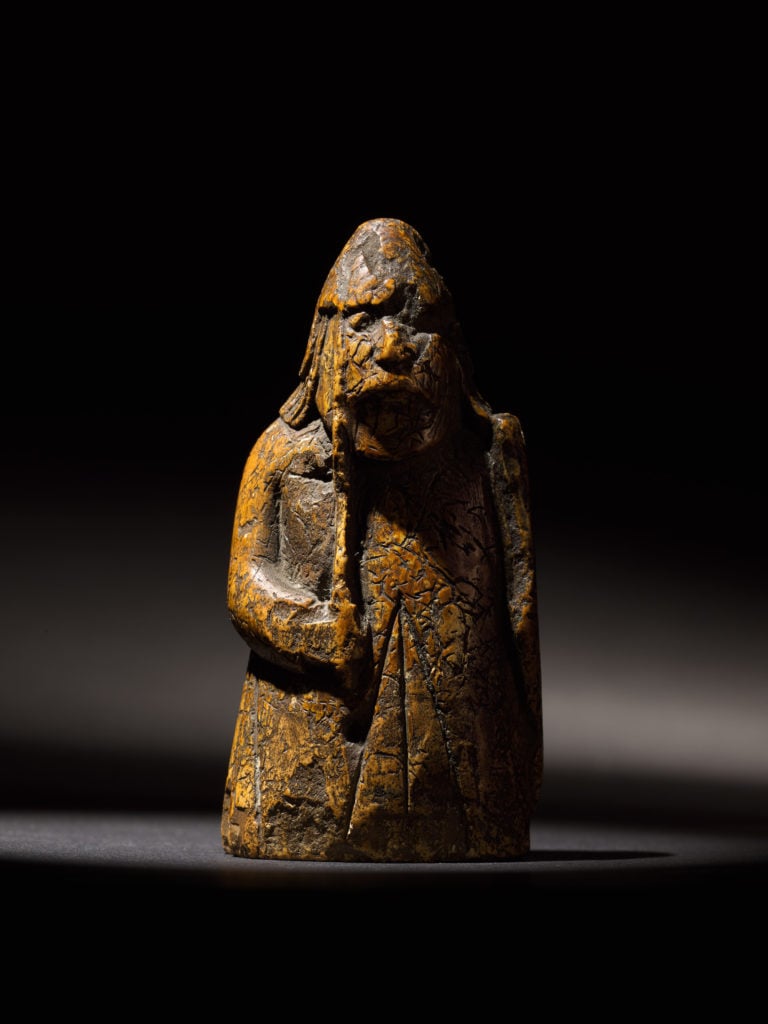Auctions
A Lewis Chessman, Bought for $6 and Then Tucked Away in a Drawer for Decades, Just Sold at Auction for Almost $1 Million
The rest of the Lewis trove belongs to British museums.

The rest of the Lewis trove belongs to British museums.

Sarah Cascone

A newly discovered medieval chess piece attributed to the Lewis Chessmen trove, which had been tucked away in a drawer for years after being purchased for just £5 (about $6) in 1964, sold for £735,000 ($927,423) at Sotheby’s London on July 2. The Lewis Chessmen is one of the most revered collection of chess pieces in the world.
“This is one of the most exciting and personal rediscoveries to have been made during my career,” said Alexander Kader, Sotheby’s co-worldwide head of European sculpture and works of art, in a statement. “It has been such a privilege to bring this piece of history to auction and it has been amazing having him on view at Sotheby’s over the last week—he has been a huge hit. When you hold this characterful warder in your hand or see him in the room, he has real presence.”
The Lewis Chessmen were discovered in 1831 on the Isle of Lewis in the Outer Hebrides, although the exact details of how they were found remain shrouded in mystery. So, too, is the chess set’s origins, although experts suspect the chessmen hail from Trondheim, Norway, which specialized in carved gaming pieces in the 12th and 13th centuries. The Isle of Lewis was Norwegian territory until 1266, and it has been theorized that the chess set was buried there after a shipwreck.
The newly-discovered chess piece belonged to an Edinburgh family. The seller’s mother inherited it from her father, an antiques dealer, and kept it in a drawer in her home, carefully wrapped in a small bag. “My mother was very fond of the chessman as she admired its intricacy and quirkiness. She believed that it was special and thought perhaps it could even have had some magical significance,” said the anonymous consignor in a statement. “From time to time, she would remove the chess piece from the drawer in order to appreciate its uniqueness.”

A newly discovered Lewis Chessman at Sotheby’s London. Photo by Tristan Fewings/Getty Images for Sotheby’s.
The final sale exceeded the pre-sale low estimate of £600,000 ($758,000) but fell short of the high estimate of £1 million ($1.26 million).
Since their discovery in the 19th century, the Lewis Chessman have become an important symbol of European civilization, often inspiring portrayals in pop culture, such as the life-size chess game in the film adaptation of Harry Potter and the Philosopher’s Stone.
The hoard, made mostly from walrus ivory, featured enough pieces for nearly four complete chess sets, missing just one knight and four warders, today known as rooks. There are 93 pieces in total, including 14 flat, circular games pieces and a single belt buckle in addition to the chess pieces. The British Museum in London has 82 objects from the trove, while the other 11 are in the collection of the National Museum of Scotland in Edinburgh. Yesterday’s sale marked the first time a Lewis Chessman appeared at auction.